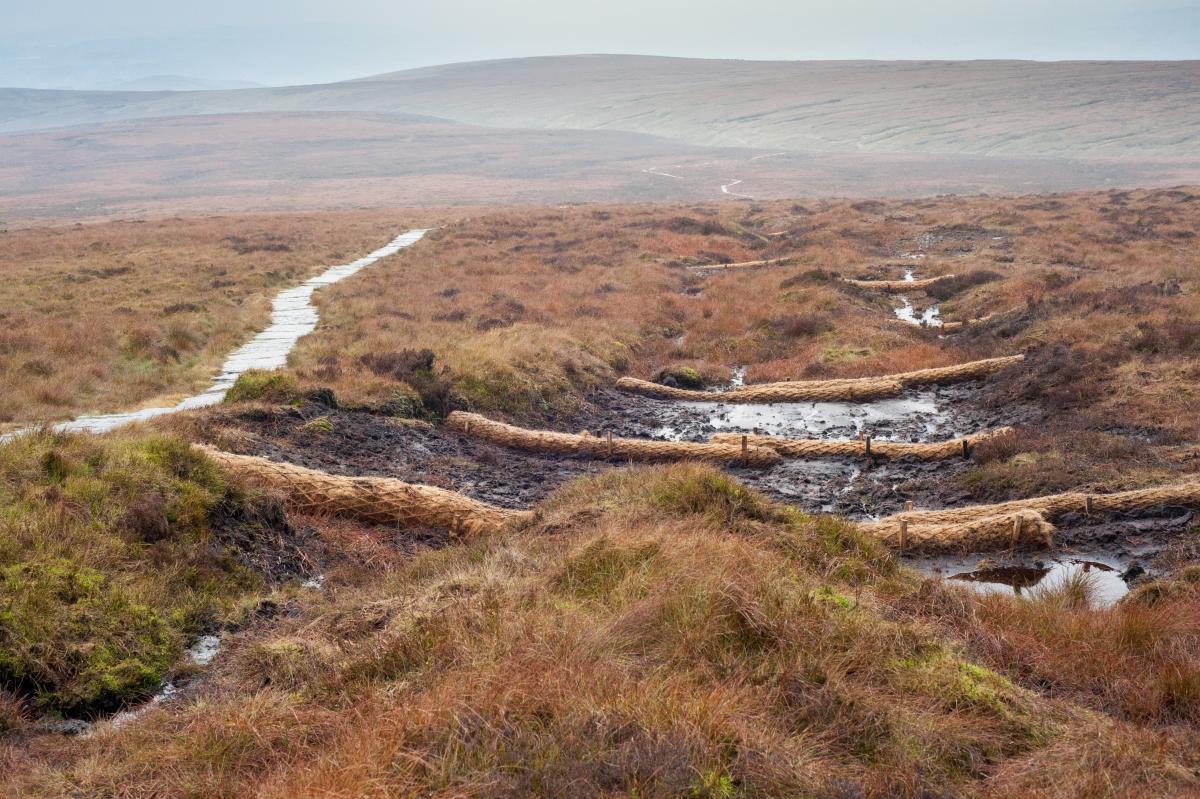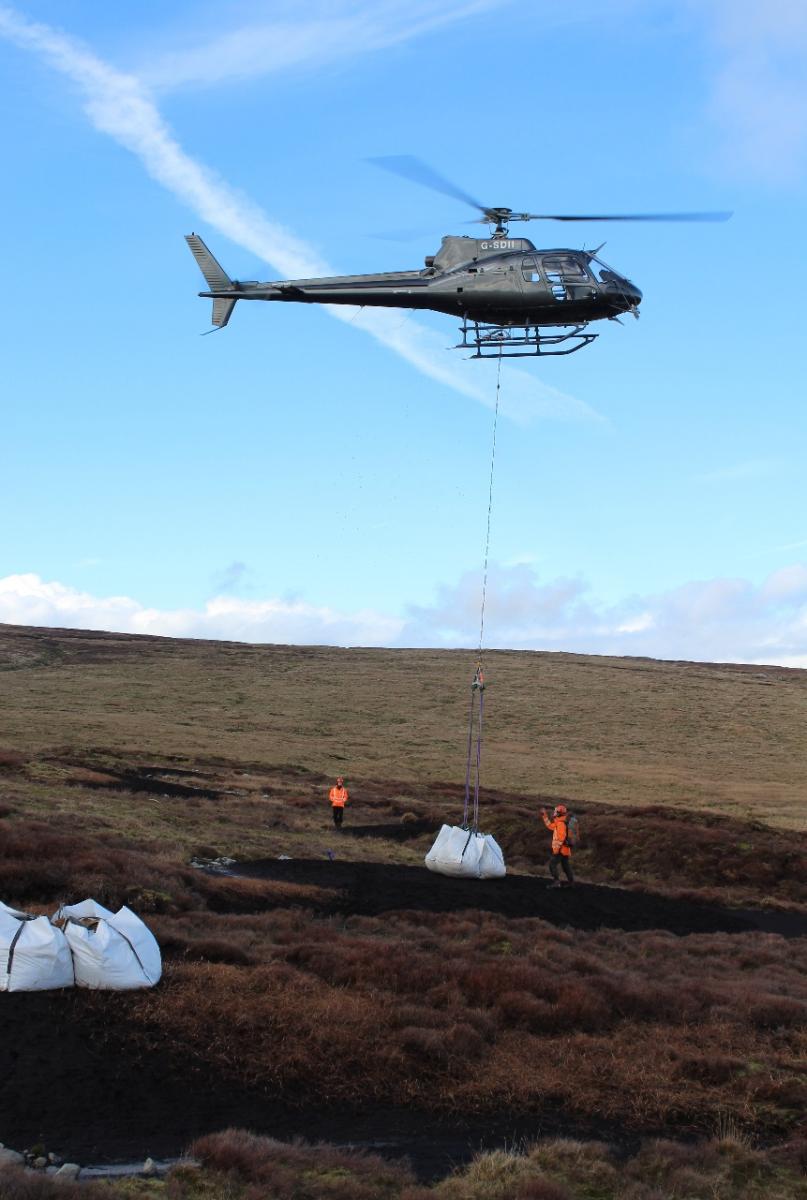 Global importance of peatland
Global importance of peatland
Peatland (or 'blanket bog' as the habitat is known in the uplands) is of international importance for its biodiversity and carbon storage. Whilst peatlands only cover 3% of the world’s land area, and thus are rarer in extent that tropical rainforests, they contain nearly 30% of all carbon stored on land. The peatlands of England contain more carbon that the forests of Europe.
A healthy, functioning blanket bog is extremely important in providing various ecosystem or natural services for society, which can include:
- reductions in downstream flood risk and siltation
- reduction in wildfire risk on moorlands
- improvements in water quality
- reducing carbon loss and promoting sequestration of atmospheric carbon
- biodiversity improvements
- improvements in landscape quality and natural beauty
Current Forest of Bowland Projects:
-
Great North Bog - The protected landscapes of the Great North Bog represent around 92% of the upland peat in England. The Great North Bog includes four National Parks, three National Landscapes and the proposed South Pennines Park and represents significant opportunity to implement the peatland restoration objectives in the 25-Year Environment Plan.
- Lancashire Peat Parnership - set up in 2009 to co-ordinate peatland restoration projects within the uplands of the Lancashire sub-region and border areas. It is intended that through this co-ordination work, partners would be able to avoid duplication of effort and maximise resources. The Lancashire Peat Partnership is co-ordinated by the Lancashire Wildlife Trust and Forest of Bowland National Landscape, and is made up of a wide range of partners. The Partnership works to restore peatlands across the Lancashire region and engage communities with these fascinating habitats, including being a partner of the Great North Bog.
- North of England Peat Project - this ambitious eight million pound Defra funded project is working to reduce carbon losses from over 20 peatland sites across the North of England. From the Scottish Borders down to southern Lancashire, different partners came together to put this three year project together, which started work on the ground in the winter of 2018-9. In Bowland we have four sites covering 125 hectares included in the project representing an investment of around £556,000. This will bring future carbon abatement as well as benefits for biodiversity, water quality, as well as local flood and wildfire prevention.
- Pennine PeatLIFE is funded by the EU LIFE programme with match funding from Yorkshire Water, United Utilities, Northumbrian Water and the Environment Agency. It is led by the North Pennines National Landscape (National Landscape) Partnership in collaboration with Yorkshire Wildlife Trust and Forest of Bowland National Landscape Partnership. Through Pennine PeatLIFE we are delivering 1,353 hectares of peatland restoration in the North Pennines, Yorkshire Dales and Forest of Bowland, establishing new restoration techniques to suit the unique climatic conditions and trialling innovative Payment for Ecosystem Services methods to inform future peatland restoration funding streams.
10 Year of Peat Restoration:
- Watch a short video documenting peat restoration work carried out on the uplands of the Forest of Bowland National Landscape in January and February 2021.
- Priority Peat
- Peat Restoration in Bowland 2011 to 2018
Evidence Downloads & Links
Blanket Bog Restoration Strategy Project (RP02998) - this sets out Natural England’s approach to restoration endorsed by the Defra Upland Stakeholder Forum based on a trajectory of change supported by a shared commitment to work collaboratively amongst landowners, land managers and stakeholders.
Restoration of degraded blanket bog (NEER003) - This review concentrated on the evidence relating to biodiversity and ecosystem services in the uplands and the impact of land management activities upon them.
The historic peat record: Implications for the restoration of blanket bog (NEER011) - This report into the palaeoecological literature was commissioned to determine whether the management of blanket peat deposits, particularly blanket bogs, might be informed by the historical record contained within peat deposits. The overarching aims are to determine whether palaeoecological information might be used to help determine where restoration might be most effective, where it might be feasible or not to restore peat given current or likely future climatic conditions and which management actions might be most effective.
Making Space for Water: The Making Space for Water Project is investigating a new approach to flood management. Moors for the Future in partnership with the Environment Agency aim to demonstrate how our natural resources can help to protect against flooding. Link to the project page on the Moors for the Future website here
Slow the Flow partnership project at Pickering: Information about the Pickering Project can be found on the Forestry Research website here
Natural Flood Management Handbook (SEPA, 2015): download a copy here

